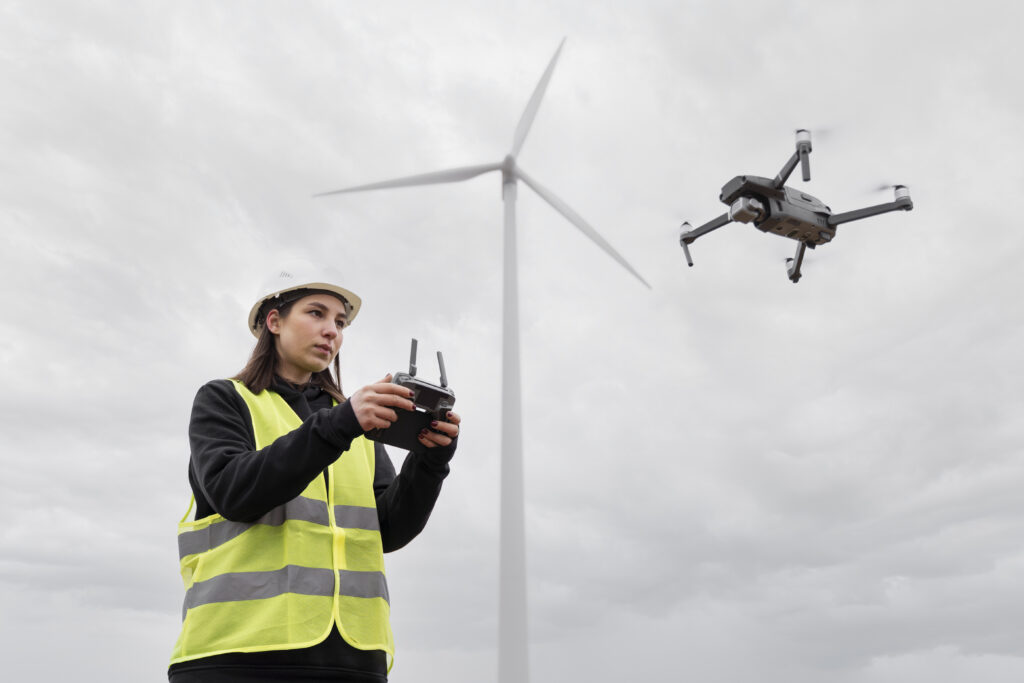In recent years, the integration of autonomous drones into various industries has sparked a technological revolution. These crewless aerial vehicles (UAVs) equipped with cutting-edge AI and navigational systems are reshaping the way we perceive and interact with technology. This article delves into the multifaceted world of autonomous drones, exploring their applications, challenges, and the transformative impact they have on diverse sectors.
Understanding Autonomous Drones
Autonomous drones are sophisticated aerial vehicles capable of executing tasks without human intervention. Unlike traditional drones, which require continuous manual control, these independent counterparts leverage advanced technologies such as artificial intelligence (AI), machine learning, sensors, and GPS to navigate, make decisions, and perform tasks independently.
Applications Across Industries
- Agriculture
Autonomous drones are revolutionizing agriculture by enabling precision farming. Equipped with sensors and imaging technology, they monitor crop health, assess soil conditions, and even facilitate targeted pesticide application, optimizing yields and reducing resource usage.- Delivery Services
Companies are exploring drone delivery services for quick and efficient distribution. Autonomous drones promise swift deliveries of goods to remote areas or urban centers, overcoming logistical challenges and reducing delivery times.- Infrastructure Inspection
In sectors like construction and infrastructure, drones conduct inspections of bridges, pipelines, and buildings. They provide real-time data, enabling timely maintenance and minimizing risks associated with manual inspections.- Public Safety and Emergency Response
Autonomous drones assist in search and rescue operations by swiftly surveying large areas and identifying hazards. They also aid in assessing disaster-stricken zones, providing crucial information to emergency responders.- Entertainment and Media
In the entertainment industry, drones equipped with high-definition cameras capture breathtaking aerial footage for films, sports events, and documentaries, offering unique perspectives and enhancing visual storytelling.
Technological Advancements Driving Autonomy

- AI and Machine Learning
The core of autonomous drones lies in their ability to learn and adapt. AI algorithms analyze data collected from sensors, cameras, and GPS, enabling drones to make real-time decisions and navigate complex environments.- Sensor Technology
Advanced sensors, including LiDAR, infrared, and ultrasonic sensors, empower drones to perceive their surroundings with accuracy. These sensors help in obstacle detection, terrain mapping, and environmental monitoring.- Improved Battery Life and Energy Efficiency
Progress in battery technology has extended flight durations for drones. Enhanced energy efficiency allows for more extended missions and increased productivity without compromising performance.- Collision Avoidance Systems
Autonomous drones incorporate sophisticated collision avoidance systems, leveraging data from sensors to navigate around obstacles, ensuring safe and efficient operations.
Challenges and Ethical Considerations
Despite their potential, autonomous drones face various challenges and ethical considerations that require attention:
- Regulatory Frameworks
Developing comprehensive regulations for autonomous drone operations is essential to ensure safety, security, and privacy. Striking a balance between innovation and regulation remains a significant challenge.- Security Concerns
Securing autonomous drones from cyber threats and hacking attempts is crucial to prevent misuse and protect sensitive data collected during operations.- Privacy Issues
Utilizing drones for surveillance or data collection raises concerns about privacy infringement. Establishing protocols to safeguard individuals’ privacy is vital in drone deployment.
Emerging Trends and Innovations
The evolution of autonomous drones continues to witness groundbreaking innovations and emerging trends that are reshaping their capabilities and applications:
- Swarm Intelligence
Advancements in swarm robotics enable multiple drones to collaborate and operate as a cohesive unit. Swarm intelligence allows for coordinated tasks such as search missions, surveillance, and large-scale data collection with increased efficiency and flexibility.- AI-Powered Object Recognition
Enhanced AI algorithms enable drones not only to navigate but also to recognize and classify objects in real time. This capability is instrumental in various fields, from identifying specific crop diseases in agriculture to detecting anomalies in infrastructure.- Beyond Visual Line of Sight (BVLOS) Operations
The progression toward BVLOS operations allows drones to operate beyond the pilot’s visual range, expanding their potential in delivery services, inspection of remote areas, and more extensive surveying tasks.- Urban Air Mobility
The concept of urban air mobility envisions a future where autonomous drones and air taxis facilitate intra-city transportation, easing traffic congestion and providing quick and efficient commute options.
Social and Economic Impact

The integration of autonomous drones brings forth a spectrum of social and economic implications:
- Job Creation and Automation
While concerns about job displacement due to automation persist, the rise of autonomous drones also creates new job opportunities in drone manufacturing, maintenance, software development, and data analysis.- Cost Reduction and Efficiency
Industries adopting autonomous drones experience cost reductions due to decreased operational expenses, enhanced productivity, and faster task execution. This, in turn, drives economic growth and competitiveness.- Environmental Benefits
With their ability to optimize resource utilization in agriculture, minimize fuel consumption in logistics through efficient deliveries, and reduce the need for extensive manual inspections, autonomous drones contribute to environmental sustainability.- Accessibility and Connectivity
Drones enable access to remote or otherwise inaccessible areas, providing essential services, medical supplies, and connectivity to underserved communities, thereby bridging gaps in accessibility.
Future Outlook and Conclusion
The future of autonomous drones is promising, with continual advancements propelling their integration into various sectors. As technology evolves, we can expect more refined and efficient autonomous systems capable of handling complex tasks with greater precision.
In conclusion, autonomous drones represent a transformative force across industries, offering unparalleled efficiency, data accuracy, and cost-effectiveness. Addressing challenges related to regulation, security, and public acceptance will be pivotal in maximizing the potential of these groundbreaking aerial vehicles.
The journey of autonomous drones continues to unfold, reshaping industries, driving innovation, and redefining the boundaries of what’s achievable in the realm of unmanned aerial technology. More pieces of information.
